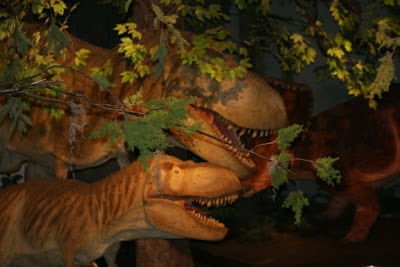Skip to main content
Young Earth Evidence 3: Dinosaur Soft Tissues
The third part of our layman's-level series on evidences for a young Earth sends evolutionists into a frenzy of denial and distortion of the facts. (Indeed, dinosaur DNA research itself is suspect, seemingly pre-censored.) The facts are simple: If dinosaurs have been extinct for sixty-five million years, finding soft tissue should be impossible. Some deny it, some invent a fanciful "explanation" that there is a previously unknown means of fossilization — but they avoid the plain facts that indicate their biases are erroneous and that the Earth may be far younger than evolutionists want to admit.
Ask the average layperson how he or she knows that the earth is
millions or billions of years old, and that person will probably mention
the dinosaurs, which nearly everybody “knows” died off 65 million years
ago. A recent discovery by Dr. Mary Schweitzer, however, has given
reason for all but committed evolutionists to question this assumption.
If dinosaurs lived over 65 million years ago, why do some dinosaur fossils still contain well-preserved soft tissues?
Bone slices from the fossilized thigh bone (femur) of a Tyrannosaurus rex
found in the Hell Creek formation of Montana were studied under the
microscope by Schweitzer. To her amazement, the bone showed what
appeared to be blood vessels of the type seen in bone and marrow, and
these contained what appeared to be red blood cells with nuclei, typical
of reptiles and birds (but not mammals). The vessels even appeared to
be lined with specialized endothelial cells found in all blood vessels.
You are encouraged to finish reading "Soft Tissue in Fossils", here. Further discussion is available in "Those Not So Dry Bones".
